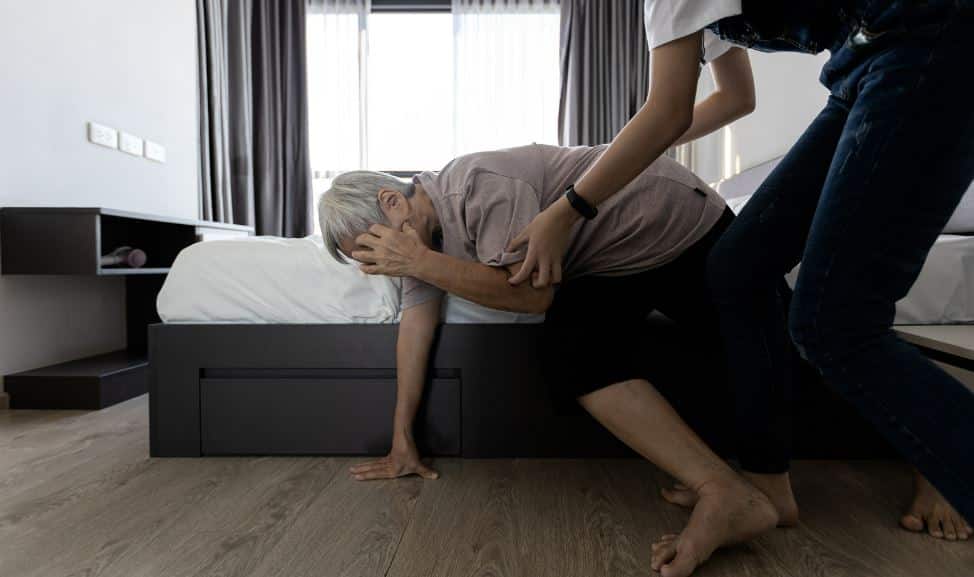The ability to maintain equilibrium is essential for survival and as such is redundant, relying on our senses of touch, vision, and the vestibular system (inner ear).
This redundancy ensures that if one sense is not functioning properly, the others can take over to ensure we maintain an upright posture.
Because the brain interprets this sensory information, a properly functioning brain is also essential for correct integration of the senses.
What happens if more than one of these senses is dysfunctional?
If more than one of the senses is impaired, one may experience a greater degree of dizziness or imbalance. This is known as multisensory or multifactorial dizziness and/or imbalance. Disorders of these senses and/or the brain can occur from a plethora of conditions and disorders. Multifactorial causes for dizziness and/or imbalance are increasingly prevalent in an elderly population and can increase ones risk of falling.
Falls are prevalent with 30% of all individuals 65 or older reporting a fall in the past year and nearly half of all falls resulting in injury. Falls can reduce ones quality of life and result in activity limitations. Falls are costly, accounting for over 50 billion dollars spent annually on medical expenses related to non-fatal falls.
Due to the large individual and financial burden caused by falls, it is essential to attempt to reduce one’s risk of falling.
Common individual risk factors:
- Vestibular (inner ear) disorders are common and account for around 40% of all dizziness seen clinically. The most common inner ear cause for dizziness is benign paroxysmal positional vertigo (BPPV), which can be successfully treated with exercises called canalith-repositioning procedures resulting in symptom alleviation for the majority of individuals in just a few days. Other inner ear conditions often respond to vestibular rehabilitation, often managed by a physical therapist, and/or medical management including medications and surgical interventions. Inner ear conditions often play a role in a multifactorial dizziness or imbalance because they are quite common.
- Orthopedic abnormalities affecting the lower extremities (e.g. osteoarthritis), decreased sense of touch in the feet (e.g. neuropathy), and/or weakness are all common contributing factors to multifactorial imbalance and are risk factors for falling.
- Visual disorders including asymmetric vision (one eye poorer than the other), decreased vision, and even the use of multifocal lenses (bifocals or trifocals) can impair ones balance.
- Cardiovascular abnormalities such as orthostatic hypotension (drop in blood pressure on standing) can cause dizziness symptoms. Orthostatic hypotension is a common reason for dizziness symptoms on standing and accommodations can often be made to minimize this by working with family/internal medicine and or cardiology.
- Other risk factors could include but are not limited to: stroke, cerebellar dysfunction, cardiac arrhythmias, medications, impaired cognition, depression, and anxiety.
Multifactorial management
Multispecialty management is often warranted to appropriately treat or manage each condition or contributing risk factor appropriately. Some causes for multisensory impairment can be easily modified or treated; for instance, BPPV can be successfully treated with canalith repositioning procedures for most individuals.
For elderly individuals utilizing multifocal lenses, especially those individuals with other falls risk factors, the recommendation for a single lens corrected for distance vision can ensure stable vision while they are walking. Some abnormalities cannot be as easily treated and may require lifestyle or environmental modifications.
Simple environmental modifications to prevent falls
Almost everyone can make some simple modifications to reduce fall risk. Here’s a brief list of 5 areas to consider improving to prevent falls.
- Adequate lighting: Ensure that all areas of the living space, especially staircases, hallways, and entrances, are well lit to prevent tripping over objects or misjudging steps.
- Clear pathways: Keep walkways free from clutter, loose rugs, or obstacles that could cause someone to trip and fall. Ensure that cords and cables are properly secured and out of the way.
- Non-slip surfaces: Use non-slip mats or rugs with a rubber backing in the bathroom, kitchen, and other potentially wet areas to reduce the risk of slipping.
- Grab bars and handrails: Install sturdy grab bars and handrails in key locations such as stairways, bathrooms, and hallways to provide support and stability while moving around.
- Secure footing: Ensure that floors are in good condition and not slippery. Repair any loose or uneven flooring, and use slip-resistant finishes or mats in areas prone to moisture or spills.
Remember, it’s always best to assess the specific needs of individuals and their environment to implement the most effective modifications for fall prevention.
A more comprehensive list of environmental modifications to reduce falls risk can be found here
Summary
Multisensory impairment is increasingly prevalent in an elderly population and requires holistic management to address all contributing components.
Appropriate management will likely require multiple specialties, but if you feel this applies to you or someone you know, a good place to start is to discuss dizziness or balance issues with your primary care provider.







